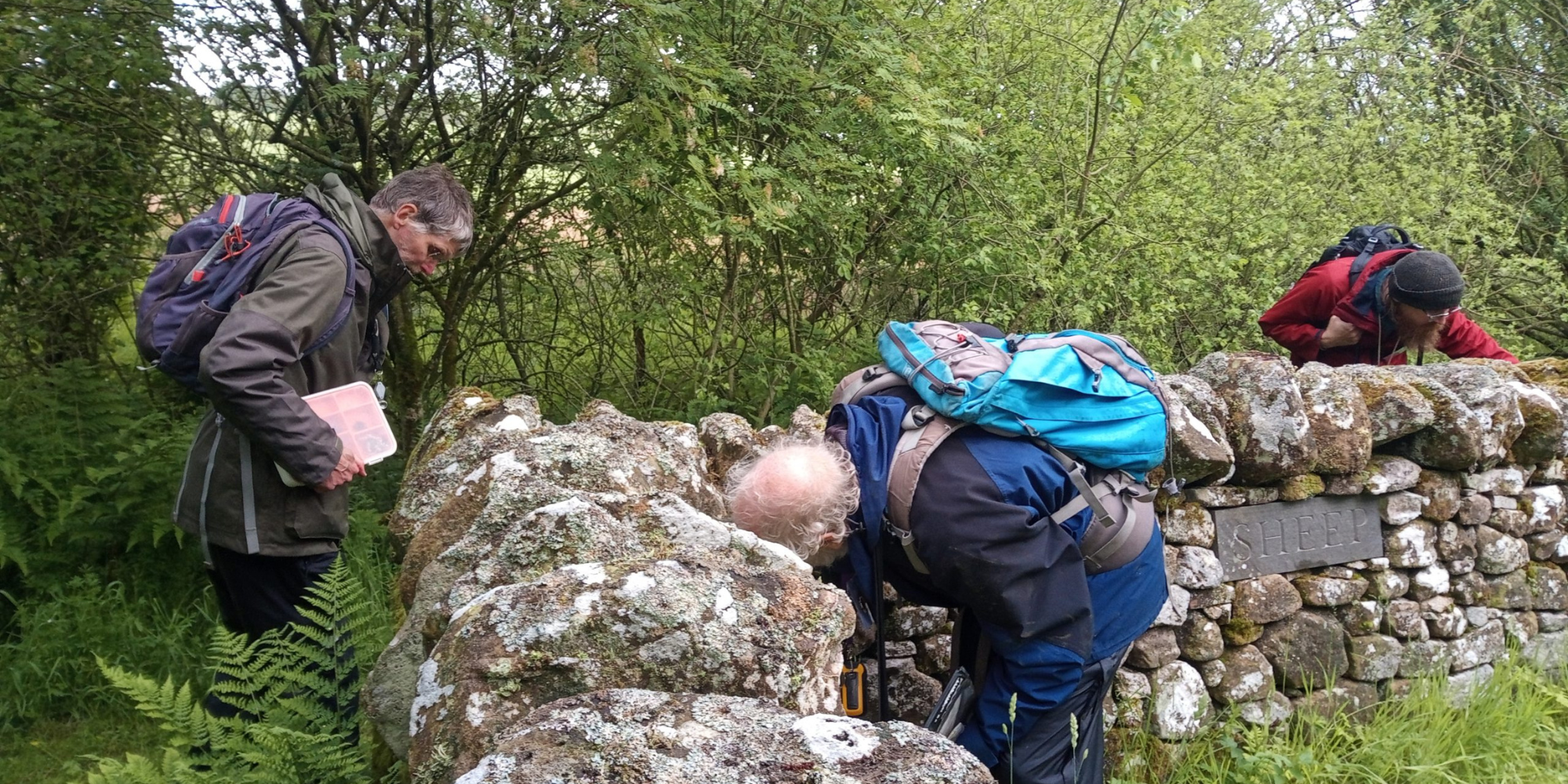
Little Sparta: From a single tree to a BioBlitz
Two days, 15 local naturalists, 24 members of the public, and 326 species recorded. This was the outcome of our BioBlitz at Little Sparta, part of Darwin Tree of Life’s public engagement activities, which took place on 17 and 18 June in the Pentland Hills about 40 km southwest of Edinburgh.
The aim of a BioBlitz is to record as many species as possible in a set period. Getting the public involved is also important to many BioBlitz events, and this was helped using the iNaturalist app that enables complete beginners to contribute biological records using their smartphones.
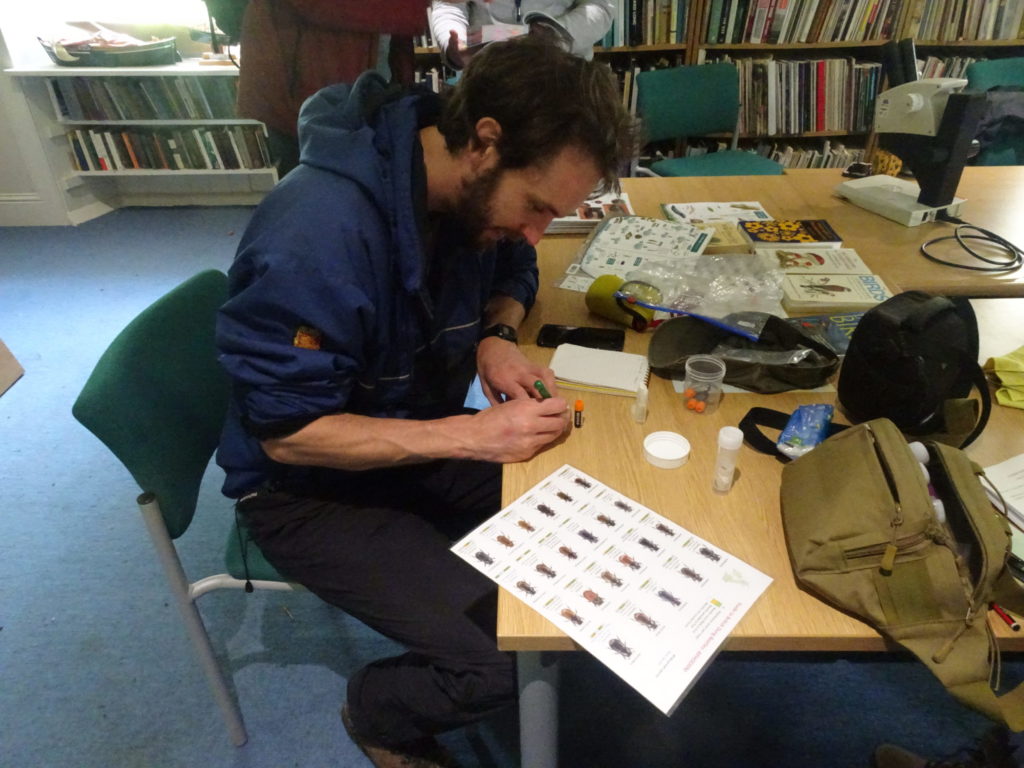
The Darwin Tree of Life project aims to generate complete genome sequences for 70,000 British and Irish species. One of the biggest challenges with this ambitious target is finding the species in the first place, and the role of amateur naturalists in this is going to be critical.
As well as showcasing the value of biological recording, the Little Sparta event was a potential source of samples for genome sequencing from the current hit list of 2,000 species. By the end of the event 21 species, mostly moths and beetles, had been sampled for genome sequencing at the Wellcome Sanger Institute in Cambridge.
| # | Scientific Name | Common Name | Taxonomic Order |
| 1 | Eupithecia pusillata | Juniper Pug | Lepidoptera (moths & butterflies) |
| 2 | Eudonia lacustrata | Little Grey | Lepidoptera (moths & butterflies) |
| 3 | Lomographa temerata | Clouded Silver | Lepidoptera (moths & butterflies) |
| 4 | Tethea ocularis | Figure of Eighty | Lepidoptera (moths & butterflies) |
| 5 | Blastobasis lacticolella (possibly B. adustella) | – | Lepidoptera (moths & butterflies) |
| 6 | Blastobasis lacticolella (possibly B. adustella) | – | Lepidoptera (moths & butterflies) |
| 7 | Lycophotia porphyrea | True Lover’s Knot | Lepidoptera (moths & butterflies) |
| 8 | Eucosma cana | – | Lepidoptera (moths & butterflies) |
| 9 | Monopis weaverella | – | Lepidoptera (moths & butterflies) |
| 10 | Petrophora chlorosata | Brown Silver-line | Lepidoptera (moths & butterflies) |
| 11 | Bupalus piniaria | Bordered White | Lepidoptera (moths & butterflies) |
| 12 | Korscheltellus fusconebulosa | Map Winged Swift | Lepidoptera (moths & butterflies) |
| 13 | Chryolina polita | Knotgrass Leaf Beetle | Coleoptera (beetles) |
| 14 | Hyppa rectilinea | The Saxon | Lepidoptera (moths & butterflies) |
| 15 | Perizoma flavofasciata | Sandy Carpet | Lepidoptera (moths & butterflies) |
| 16 | Ptilodon capucina | Coxcomb Prominent | Lepidoptera (moths & butterflies) |
| 17 | Pterostoma palpina | Pale Prominent | Lepidoptera (moths & butterflies) |
| 18 | Chiasmia clathrata | Latticed Heath | Lepidoptera (moths & butterflies) |
| 19 | Lacanobia oleracea | Bright Line Brown Eye | Lepidoptera (moths & butterflies) |
| 20 | Diarsia brunnea | Purple Clay | Lepidoptera (moths & butterflies) |
| 21 | Agrilinus ater | – | Coleoptera (beetles) |
| 22 | Agrilinus ater | – | Coleoptera (beetles) |
| 23 | Acrossus depressus | – | Coleoptera (beetles) |
These samples will hopefully generate the first genome sequences for these species, giving us greater potential to understand how species interact and survive.
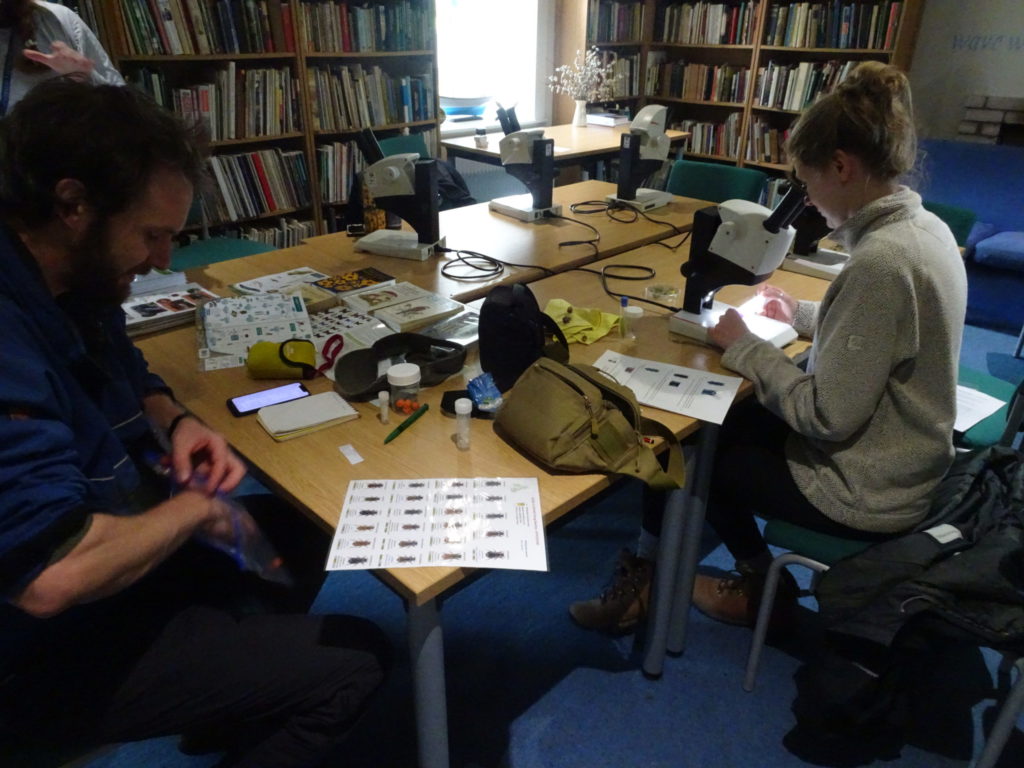
Little Sparta: An ecological study
One of the fascinating things about Little Sparta is that it can be viewed as an ecological study into the ability of nature to reassert itself in a place after a long period of suppression, although the motivations behind the creation of the garden were somewhat different.
The artist Ian Hamilton Finlay and his wife Sue began the process of creating the garden at Little Sparta in 1966. The garden became the setting for over 270 artworks by Finlay in a series of specific landscapes and the entire garden is Finlay’s greatest work of art.
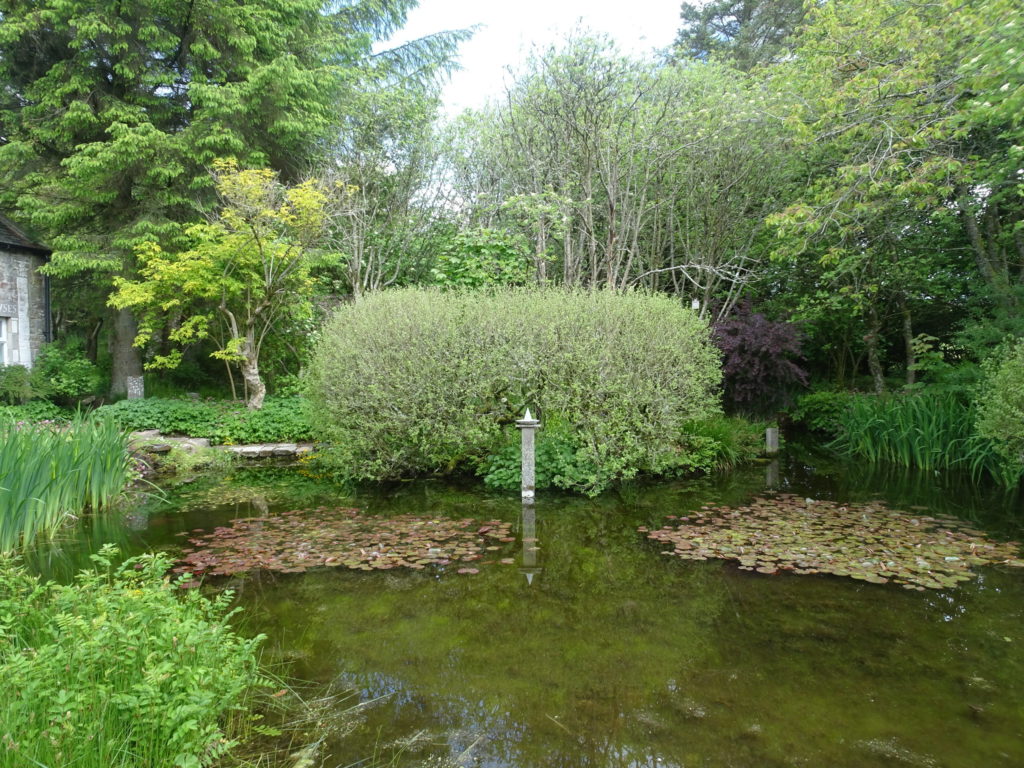
When work began on the garden there was a single tree, an ash, and a farmhouse needing renovation. The land that became a garden was a closely grazed sheep pasture, which from an ecological perspective would have been described as degraded.
The natural state of this land would be a mixed broadleaved woodland of upland tree species such as ash, wych elm, birch, oak and willows. Having been denuded of the natural tree cover over millennia, and with the grassland so heavily grazed, the ecological opportunities afforded through shelter, food and varied environmental conditions became extremely limited. Looking beyond the fence of Little Sparta today gives a good sense of how suppressed nature would have been in 1966.
More than 50 years on, the garden is an oasis for wildlife and a testament to the power of gardening to create habitats that plants, fungi and animals can exploit. But this outcome was not inevitable. Some gardening styles and practices are not particularly wildlife friendly. Fortunately for us, and the species of the Pentland Hills, one of Finlay’s interests was the relationship between humans and nature, so the development of a biodiverse garden was in some sense always part of the vision.
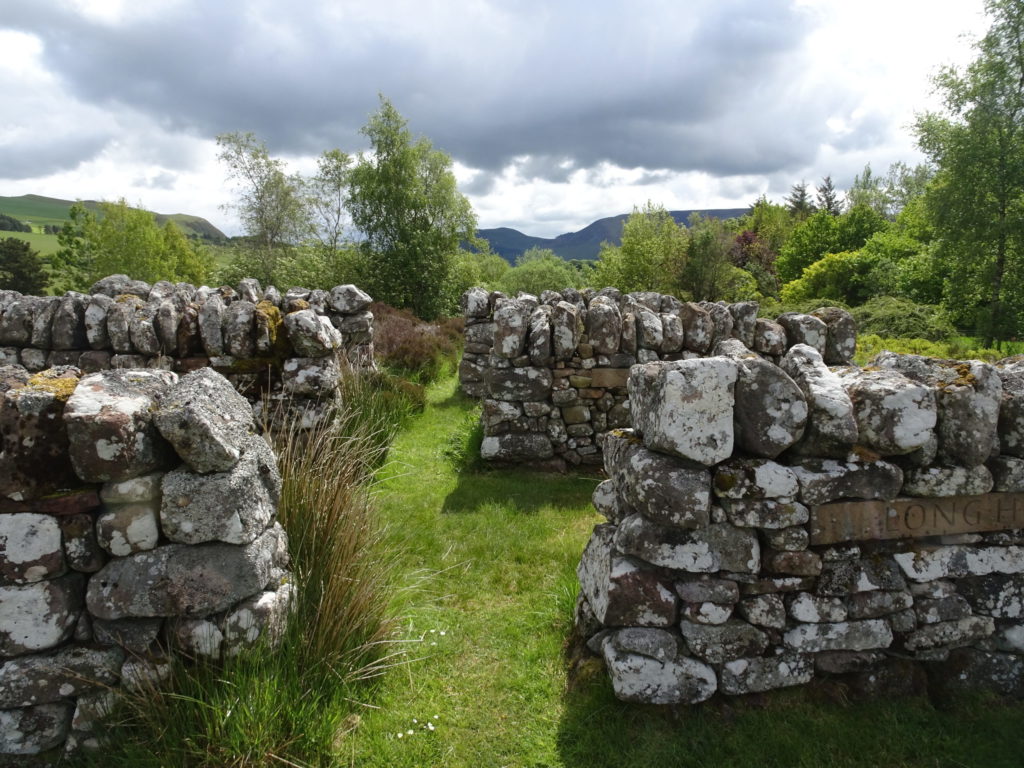
What did we find?
Now that the biological records made during the BioBlitz are largely collated, we can review what was found and give some context to the findings.
The final total, excluding some yet-to-be-identified moths and other insects, was 326 species. This total is very respectable when you consider that lichens, a biologically diverse group that are clearly abundant at Little Sparta, were not properly assessed.
The breakdown into groups of organisms was as follows:
| Group | No. species recorded | % total species recorded |
| plants | 164 | 50% |
| – vascular plants | 90 | 27% |
| – mosses & liverworts | 74 | 23% |
| animals | 146 | 45% |
| – moths | 70 | 21% |
| – birds | 22 | 7% |
| – other animals | 54 | 17% |
| fungi | 16 | 5% |
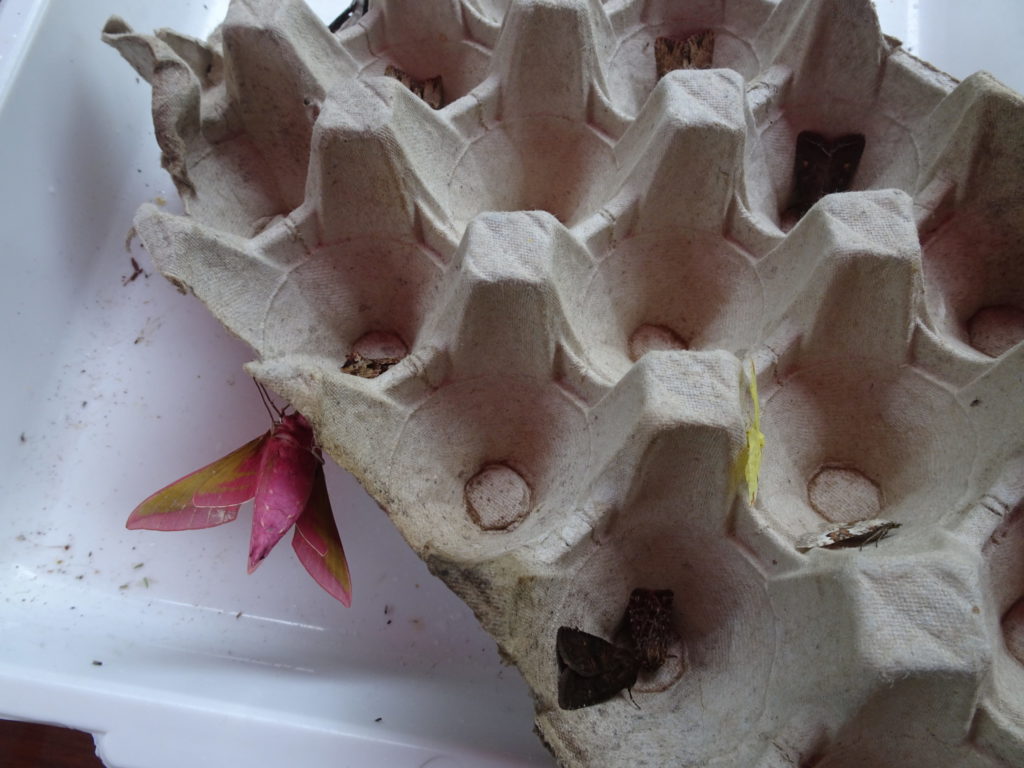
A pattern that has emerged in previous BioBlitz events held by the Botanics is that both moths and bryophytes (mosses and liverworts) have turned out to be particularly rich components of the overall biota. Little Sparta is no exception to this, with counts for moths and bryophytes of 70 and 74, respectively.
In part this reflects the fact that both groups are rich in species. However, it is interesting to note that both moths, by virtue of flight, and bryophytes, by virtue of microscopic spores, are relatively mobile species that may more readily colonise suitable new habitat as it develops. This could in part explain why these groups are so well represented at Little Sparta.
Conversely, a reasonable prediction would seem to be that less mobile species are likely to be underrepresented at Little Sparta. Clearly, Little Sparta deserves further study. Not least because the species that can be recorded will change with the seasons. Moths are a good example of a group that will be represented by different species at different times of year.
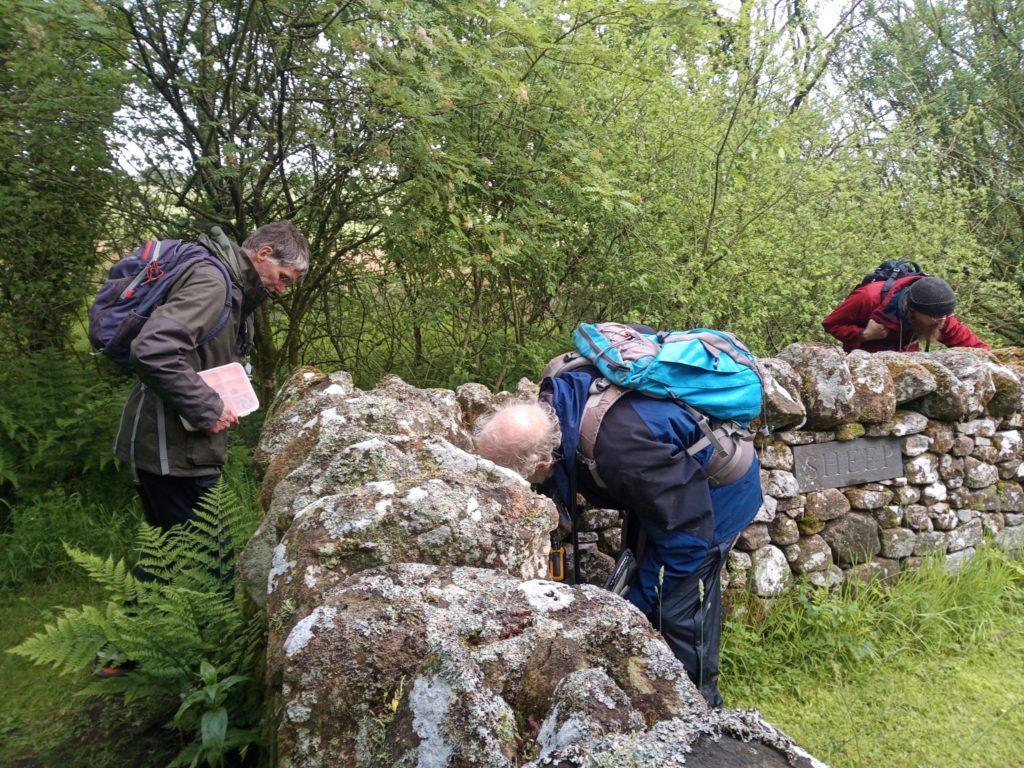
Ecology technology
From a public engagement perspective, the iNaturalist app opened new opportunities. People who had not done biological recording before were able to contribute records and found the app easy to use.
Unknown species can still be recorded, and identifications can be suggested by other users. Often these suggestions came from others at the BioBlitz, but an interesting outcome was the more than 40 other users of the app who were not present at Little Sparta who helped with species identifications. The app did seem to live up to the billing of being a community for naturalists.
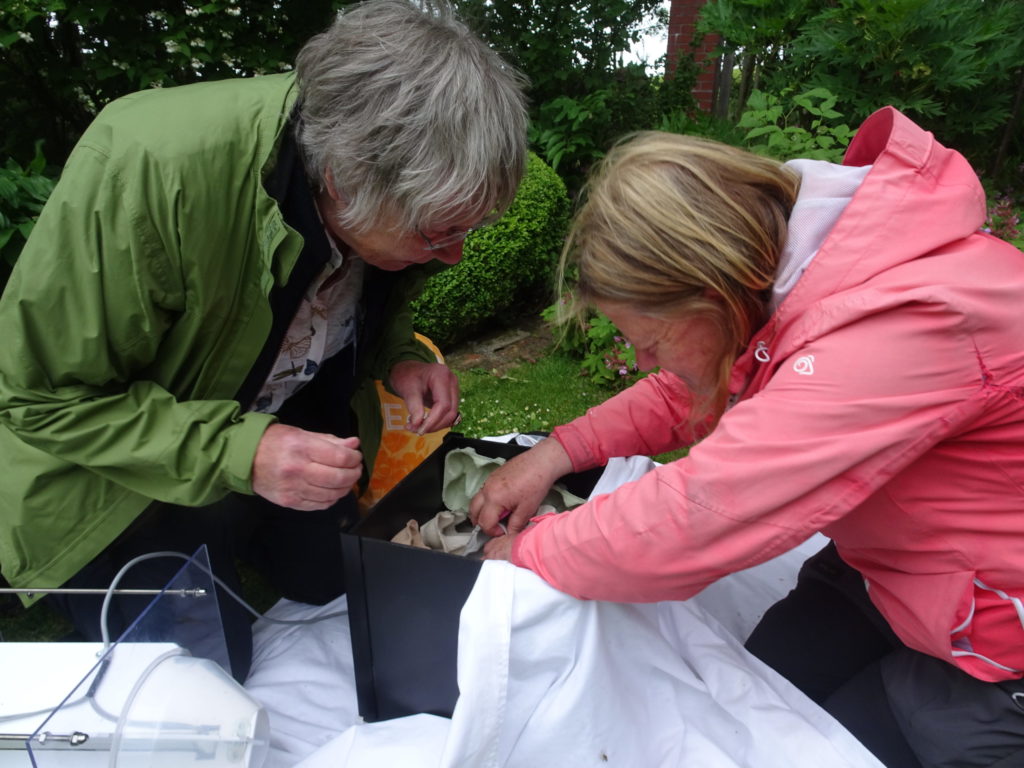
At the time of writing, over 75% of the 362 records made via the app had reached what is called ‘research grade’. This is a data quality check that involves a second user having agreed with an existing identification. Such records can then flow into a data checking process that could see them becoming part of the national biological records that are publicly available online via the National Biodiversity Network (NBN).
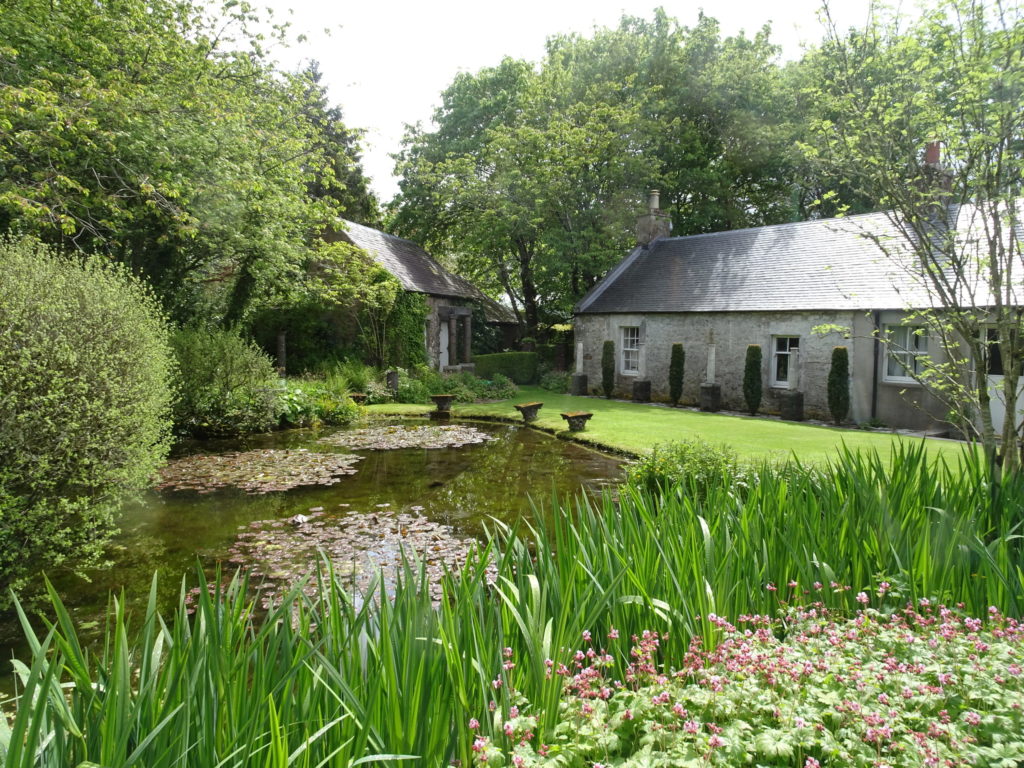
Some of the naturalists preferred to stick to their standard recording procedures and so efforts were made to capture as many of these paper records as possible with the app. This involved pairing naturalists with someone who was using the app. Some of the naturalists even had their opinions of the app altered over the course of the event.
A feature of the app is that it uses image-recognition to suggest identifications. Moths proved to be a group that the app was pretty good at identifying. In one case the moth expert revised their opinion when the app identification was not in agreement. A closer examination proved that the app was right in its suggestion!
At the end of play on the Sunday, 204 species had been recorded using the app. This represents 62% of the final count of 326 species – that includes all records provided by 29 June.
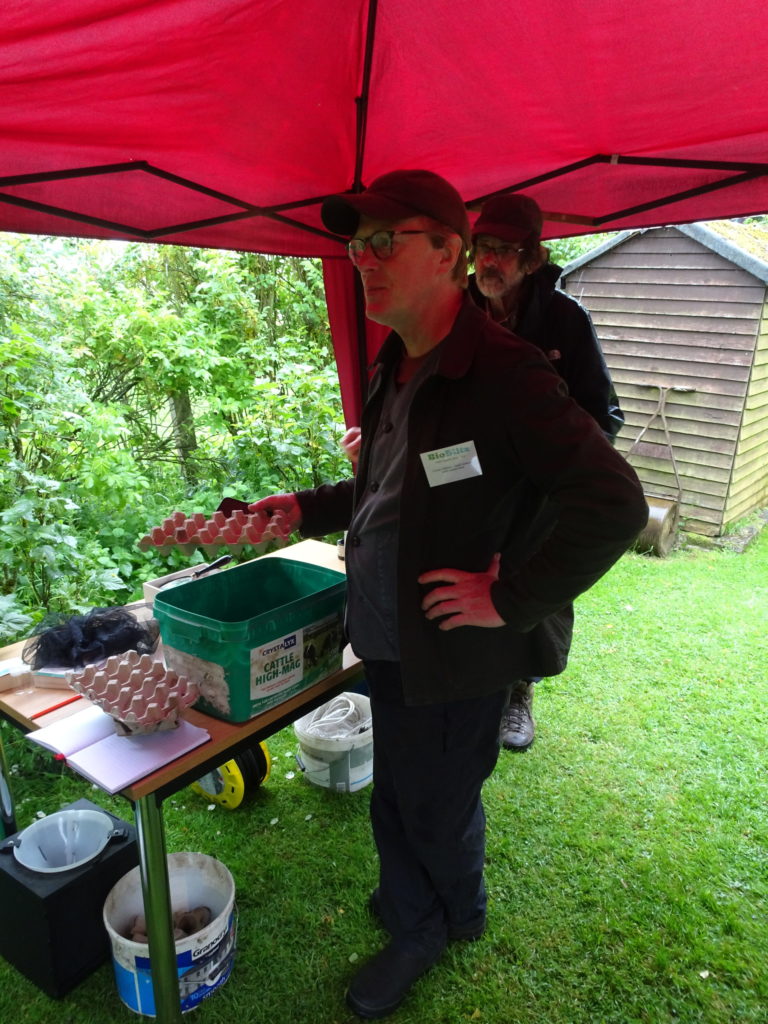
Braving the elements
Public involvement was restricted by poor weather. On day one there was near constant rain and on day two the wind was persistent and made conditions feel cold. In total, 24 members of the public participated. The bulk of these were adults, although ten children under ten came as part of family groups.
In addition, a local primary school brought six pupils accompanied by two teachers and they participated in a guided activity looking at nature with a focus on ponds. Five students from a local college helped with the running of the event and particular thanks go to them and the team of 15 naturalists who were crucial to the success of the recording effort.
It is worth noting that most of the naturalists were not professional scientists, highlighting that so-called ‘citizen scientists’ are a key part of both BioBlitz events and general biological recording activity.
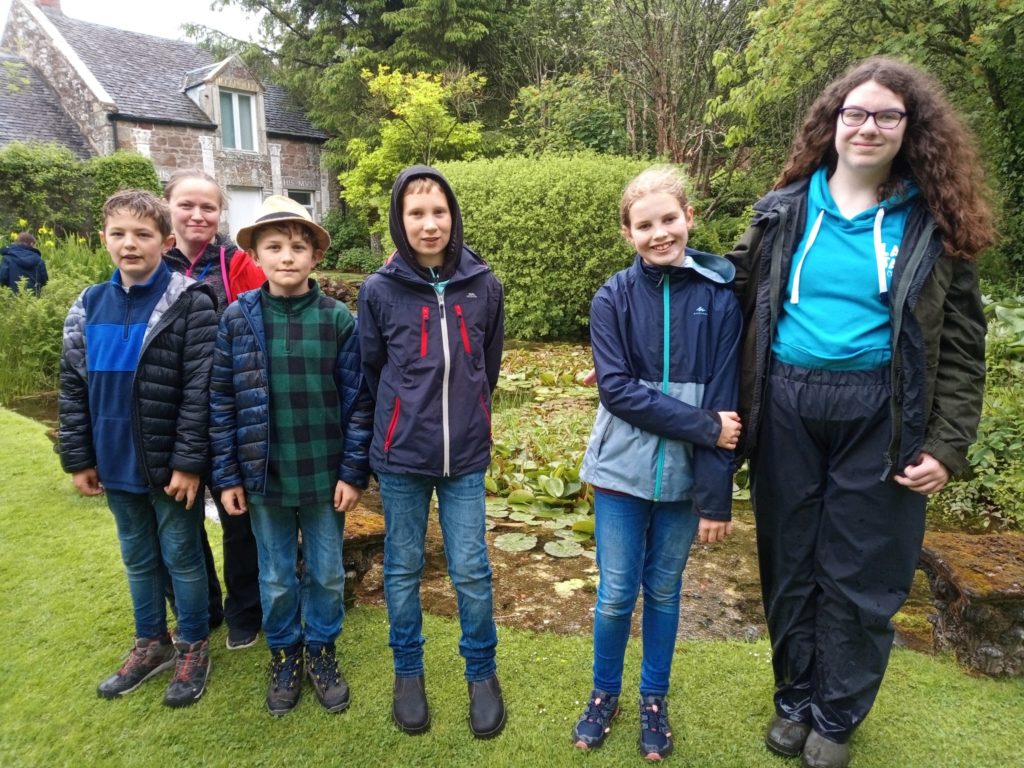
eDNA: finding species tricky to identify
A trial was conducted to see whether water samples from the garden’s four ponds could be used to identify microscopic plants and other forms of pondlife from what is called environmental DNA (eDNA).
The method involves filtering water samples to trap DNA on specially designed filters. The samples will be processed in the labs of the Marine Biological Association in Plymouth and will potentially add further to the total species list for the site.
Microscopic life can be very challenging to identify by looking down a microscope and this approach could provide new ways of assessing the biodiversity of water bodies. The trial was conducted with a view to streamlining the sampling procedure so that citizen scientists could reliably and easily carry out the sampling.
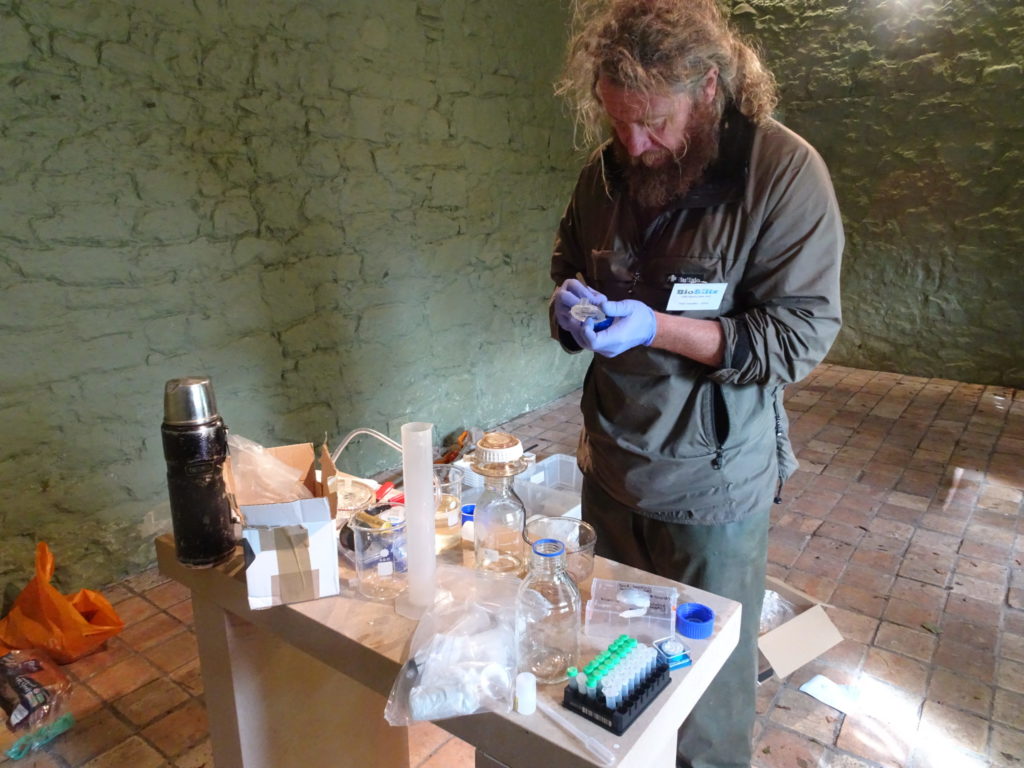
An update on the results of the eDNA work at Little Sparta will be provided when the samples have been analysed. As DNA assays aid rapid identification through technologies such as DNA barcoding this will revolutionise how we monitor species. The work of the Darwin Tree of Life will be critical in supporting the development of these new technologies through the provision of entire genome sequences.
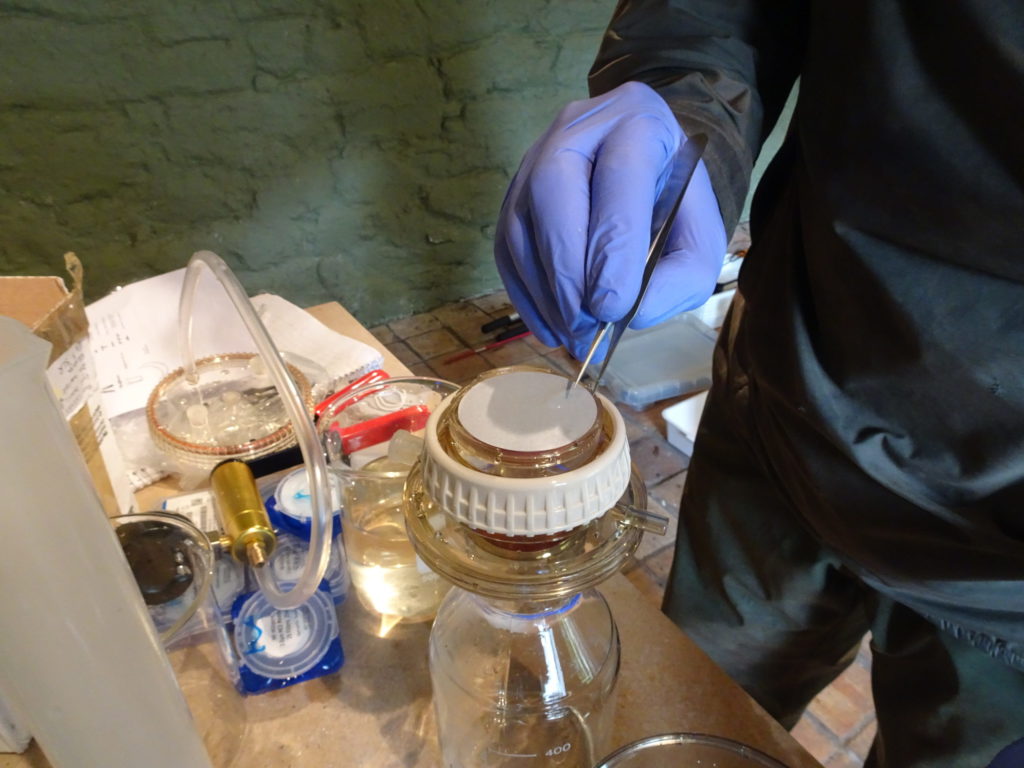
The team behind the BioBlitz would like to say a big thank you to all who helped and participated. The staff and friends of Little Sparta showed great enthusiasm for the BioBlitz and supported both the planning and delivery of the event. The success of the event reflects this effort.
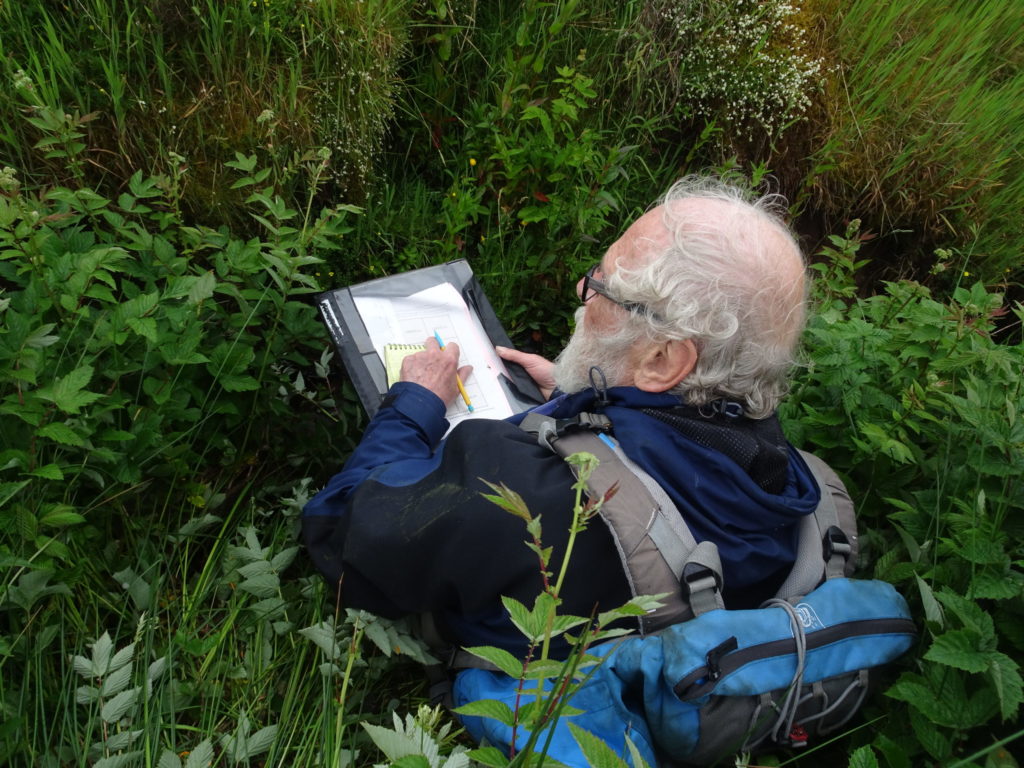
This article has been adapted from the original, published on the Botanics Stories section of the Royal Botanic Garden, Edinbugh, website.
